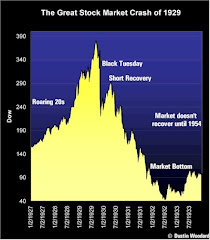This is an important time for pension reform in Canada.
Next month in Kananskis the finance ministers of Canada are getting together to develop a plan for improving Canada's retirement security system. One the table are two proposals, one to improve CPP and the other to add an additional, or supplementary plan on top of the CPP.
Organized Labour Plan
The public sector unions are in support of boosting the CPP pension. They are correct that something needs to be done and this plan will be a bonanza for them.
Public sector unions already have the advantage of being able to get full pensions, when qualified, as early as age 55.
Public sector unions already have the advantage of being able to get full pensions, when qualified, as early as age 55.
The CLC has put together a good analysis of their position and the problems for Canadians on the CLC website. Retirement Security for Everyone . They have also provided a good overview of the statistics in each province. What Do They Mean for each Province?
The key point for this initiative is that the CPP changes public sector unions recommend will have a windfall effect on public sector pensions. Public sector plans are currently integrated with CPP, their plan to double CPP will greatly reduce the pension shortfalls that many public sector face today.
The first $11,200 of a defined benefit pension is paid by the CPP. The rest of the pensions is paid from the pension plan. Doubling CPP will mean that the first $22,400 of public sector pensions will be paid by CPP.
For example, on a $70,000 a year public sector pension CPP pays $11,200 and the pension plan pays $58,800. With a doubling of the CPP the $70k pension would need only $47,600 coming from the pension plan because CPP contributions would be $22,400 towards the pension,
The first $11,200 of a defined benefit pension is paid by the CPP. The rest of the pensions is paid from the pension plan. Doubling CPP will mean that the first $22,400 of public sector pensions will be paid by CPP.
For example, on a $70,000 a year public sector pension CPP pays $11,200 and the pension plan pays $58,800. With a doubling of the CPP the $70k pension would need only $47,600 coming from the pension plan because CPP contributions would be $22,400 towards the pension,
The impact of a doubled CPP will save tens of Billions of dollars for public sector unions. This is especially important when many of these plans are serious underfunded.
This concept of CPP integration is described in the article from CLC Time to double pension benefits is right now
In fact, the vast majority of workplace pensions are integrated with CPP, so any increase to CPP premiums will mean you pay less into your workplace pension. Therefore, you get the same pension income, just more of it from CPP. Labour's plan to double CPP benefits would raise the floor of our pension system from $11,000 per year to $22,000 per year. This benefits the 93 per cent of Canadians who are covered by the CPP. It also offers a source of retirement income that is portable across jobs, portable across provinces and territories, insured against inflation, and backed up by the government.
Here is an interesting editorial from MP Chuck Strahl describing how the CPP works in conjunction with public sector pensions. Although he is discussing the current debate on veteran's pensions the same principle applies to all public sector pensions. Strahl defends party policies
Raising the age for CPP pensions becomes a mute point for the public sector. They have this special rule that allows them to collect CPP (bridge benefit) regardless of the age they retire at. Through the bridge benefit the public sector accesses a taxpayer funded benefit identical to CPP, called a bridge benefit. The biggest retirement age in the public sector is age 55.
Note from the CLC reports that total RRSP contributions for all Canadians last year were $33 Billion. This is very close to the $30 Billion taxpayers and employees into public sector pension plans last year. The only problem is that public sector pensions represent less than 20% of all workers in Canada.
Supplementary Plan
There is an alternative plan that is being suggested for retirement security reform. Any changes are designed to help the 70% of the private sector with no formal workplace pension plans. A supplementary plan is a top-up or add-on to the CPP plan. This style of plan has been implemented in many countries including New Zealand, Norway, Sweden and recently the UK.
Keith Ambachtsheer is Canada's recognized pension guru. He has consulted on government pensions around the world and has led a large part of the discussion on pension reform in Canada. He provides good analysis in a recent editorial It’s time to choose the winning pension reform horse.
Insurance companies have yet to wade in and provide their opinion on pensions but the supplementary option is in their favor. They would maintain control of the management pensions with the supplementary pension system. Managing the retirement savings of Canadians is big business in Canada.
The biggest complaint about Canada's private retirement savings system, mainly RRSP's, is the high cost of management fees associated with these plans. The CLC alludes to it in their proposal. However, I spoke with one senior Canadian insurance executive who indicated that large insurance companies have committed to managing these plans for .75 BPS, or less than 1%. The plans will be managed under huge savings programs managed much like insurance companies manage DB pension plans.
Life insurance and private investment management companies manage the supplementary system in New Zealand which is called the KIWI plan. It appears this is the way the UK NEST plan will be managed as well.
Challenges
One of the major challenges to pension reform is the question, where will the money come from?
The public sector of course expects it to come from taxpayers and businesses. That is one reason they like the CPP option so much. It is funded 50/50 by workers and businesses.
The effect on small business in this country will be very harmful regardless of which option is chosen. They will be funding at least half of any pension reforms under both the current plans.
In the UK where the NEST plan is being rolled out there is a required employer contribution and business of course, get to pick up the administrative costs as well. Small businesses facing "extortionate" pension costs
A couple of articles have touched on the impact of these pension changes. Securing the future by expanding the Canada Pension Plan Mark Newton at Heenan Blaikie points out that:
Any type of Canada Pension Plan reform will have a potentially significant impact on employers and employees. Regardless of how the benefits are increased, more money will have to be pumped into the system by both employers and employees. The questions not addressed by the paper are where the money will come from and what the reaction might be, at a time when payroll and other taxes are already high.
For example, a possible reaction by some private sector employers to increases to the Canada Pension Plan might be to reduce contributions to other pension and retirement savings plans, so as to maintain existing payroll costs for pensions and benefits. This would defeat the government's stated objective of increasing retirement income levels. It could also further increase the disparity between public and private sector retirement benefits, insofar as public sector employers would continue to benefit from rich defined benefit pension plans, plus augmented Canada Pension Plan benefits.
In the Wealthy Boomer Jonathan Chevreau wrote:




No comments:
Post a Comment